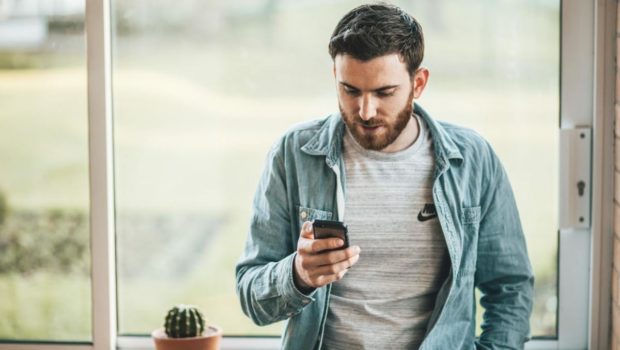Mobile technology saving lives: Changing healthcare systems with simple technological solutions – The European Sting – Critical News & Insights on European Politics, Economy, Foreign Affairs, Business & Technology
This article was exclusively written for The European Sting by Ms. Lorena Batista Boeing and Natalie Sbalqueiro Fogaça, both second year medical students at Faculdade Evangélica Mackenzie do Paraná in Curitiba, Brasil. They are affiliated to the International Federation of Medical Students Associations (IFMSA), cordial partner of The Sting. The opinions expressed in this piece belong strictly to the writers and do not necessarily reflect IFMSA’s view on the topic, nor The European Sting’s one.
Smartphones: from speed dial to clinical examination.
The increase in the use of technological products impacted, proportionally, the quality of life of the population. Furthermore, in the end of the 20th century, the first mobile phone was created, making it possible for users to communicate everywhere around the world, regardless of the distance between them. Currently, the phone has acquired numerous functions, other than communication, providing the use of apps and video calls, for example. Thereby, these discoveries are helping the healthcare industry, as they guarantee a more efficient and faster information sharing, allowing quick diagnoses and access to health professionals.
Smartphones have their importance growing in the medical field since their creation. Initially, they assist in medicine with speed dial – a resource that allows emergency calls using few buttons. This type of assistance enables ambulances to be activated more quickly, increasing the patient’s chance of survival. Nevertheless, smartphones combined with its evolution with medicine, are currently guaranteeing teleconsultation, which utilizes authorized health apps, ensuring the realization of a virtual consultation. This technology mainly assists in patient anamnesis, but also makes possible, for the doctor, to check for some vital signs and conduct small clinical examinations, using smartphones equipped with specific medical devices for testing. These exams can be, for example, electrocardiogram, ophthalmological exams and perform an ultrasound scan in the hearts of individuals.
Moreover, the app “Healthy.io” is design to improve health care by allowing regular people to make a home-based urine test equivalent to laboratory-based device. This means the app software can diagnose whether someone has a condition – like diabetes, urinary tract infection or kidney disease – using computer imaging technology to analyze a dipstick and color-coded slide. As the test can be performed very easily at home, it is believed that it has the potential to help health systems with the early diagnosis of some diseases.
In the case of the COVID-19 pandemic, the brazilian Ministry of Health, through the country’s public universal health system (SUS), created the “CORONAVÍRUS – SUS” app, in order to delay and interrupt the disease transmission chain. The app aims to make the population aware of the Coronavírus (Covid-19), so, at the beginning the platform simulates an anamnesis, to analyze if the patient is contaminated or not. Therefore, depending on responses, the platform provides guidelines for the patients to protect themselves and other people. In addition, the app gives information on symptoms, prevention, show maps of registered health units nearby and even have a fake news support page. This instructs the population about appropriate preventive and behavioral measures, further promoting the importance and relevant role of mobile devices, such as smartphones.
In conclusion, it is clear that the benefits from mobile devices, provided for the population, have grown within the years. These technologies, when directed to the health system, help to carry out tests and diagnostics, whether in times of pandemics or not. In brief, they enable the sharing of information, in real time, between professionals and patients.
References:
- Weinstein RS, Krupinski EA, Doarn CR. Clinical Examination Component of Telemedicine, Telehealth, mHealth, and Connected Health Medical Practices. Med Clin North Am. 2018;102(3):533-544. doi:10.1016/j.mcna.2018.01.002 https://sci-hub.tw/https://www.sciencedirect.com/science/article/abs/pii/S0025712518300026?via%3Dihub
- GALINDO NETO, Nelson Miguel et al. COVID-19 AND DIGITAL TECHNOLOGY: mobile applications available for download in smartphones. Texto & Contexto – Enfermagem, Florianópolis, v. 29, n. [], p. 1-11, jul. 2020. FapUNIFESP (SciELO). http://dx.doi.org/10.1590/1980-265x-tce-2020-0150. (https://www.scielo.br/scielo.php?pid=S0104-07072020000100203&script=sci_arttext&tlng=pt)
- WALL, Matthew. How a smartphone saved my mother’s life. 2019. Elaborada por BBC. Disponível em: https://www.bbc.com/news/business-47156077. Acesso em: 08 fev. 2019.
About the author
Lorena Batista Boeing and Natalie Sbalqueiro Fogaça are both second year medical students at Faculdade Evangélica Mackenzie do Paraná in Curitiba, Brasil. Natalie Fogaça is a member of the International Federation of Medical Student’s Associations (IFMSA). They are interested in the scientific world by doing researches and getting more knowledge. Also, they have done extension programs during their first year of medical school, like “Operação Vagalume”, which is a volunteer program based on the movie ‘’Patch-Adams”, so medical students, dressed as clowns, go to the university hospital trying to entertain patients and staff while they are there.








Gloss